What is a Referral Program? Everything You Need to Know in 2026
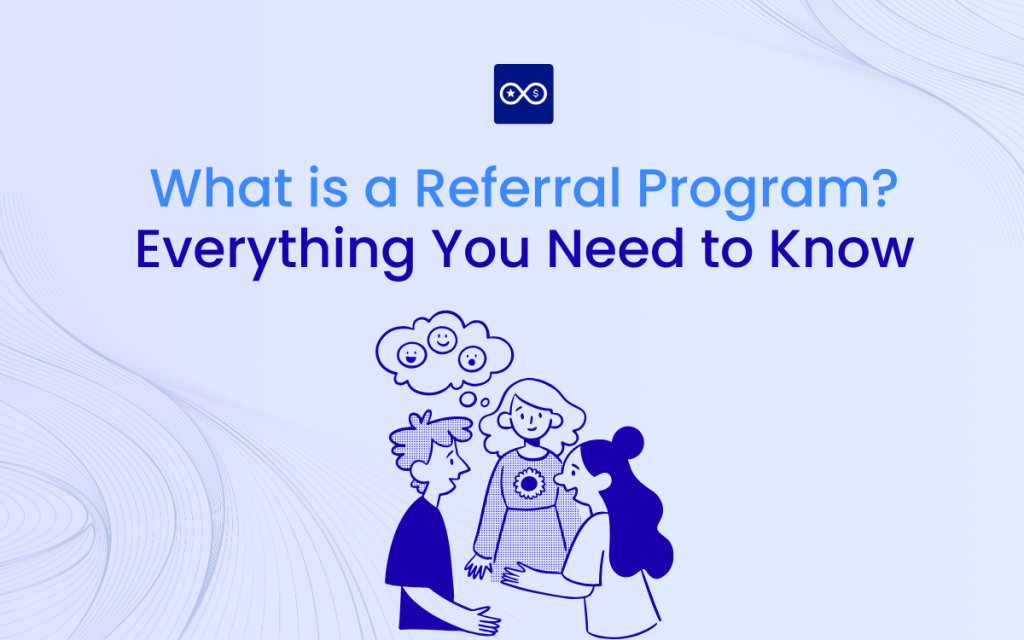
In today’s crowded digital marketplace, consumers are becoming less responsive to traditional ads and increasingly cautious of online reviews. This shift in trust has made referral programs, where real customers advocate for your brand, one of the most reliable and cost-effective growth strategies available. With digital ad costs rising by an average of 15-20% annually and click-through rates declining, businesses are turning to referral programs as a cost-effective alternative that delivers superior results. This article will show you what a referral program is, why referral programs matter more than ever in 2026 and breaks down the key benefits, trends, and strategies you can use to build a program that truly delivers. Let’s get started!
What Is a Referral Program?
Referral program definition
A referral program is a systematic marketing strategy that incentivizes existing customers, employees, or partners to recommend a business’s products or services to their network. By offering rewards for successful referrals, these programs leverage the power of word-of-mouth marketing and social proof to drive high-quality customer acquisition.
The psychology behind referral programs is rooted in trust and social validation. When someone receives a recommendation from a friend, family member, or colleague, they’re far more likely to trust and act on that recommendation compared to traditional advertising. This phenomenon, known as social proof, makes referrals one of the most persuasive forms of marketing available to businesses.
Referral programs work by creating a win-win-win scenario: the referring customer receives a reward for sharing something they already love, the new customer often receives a welcome incentive, and the business gains a high-quality lead with a much higher probability of conversion and retention.
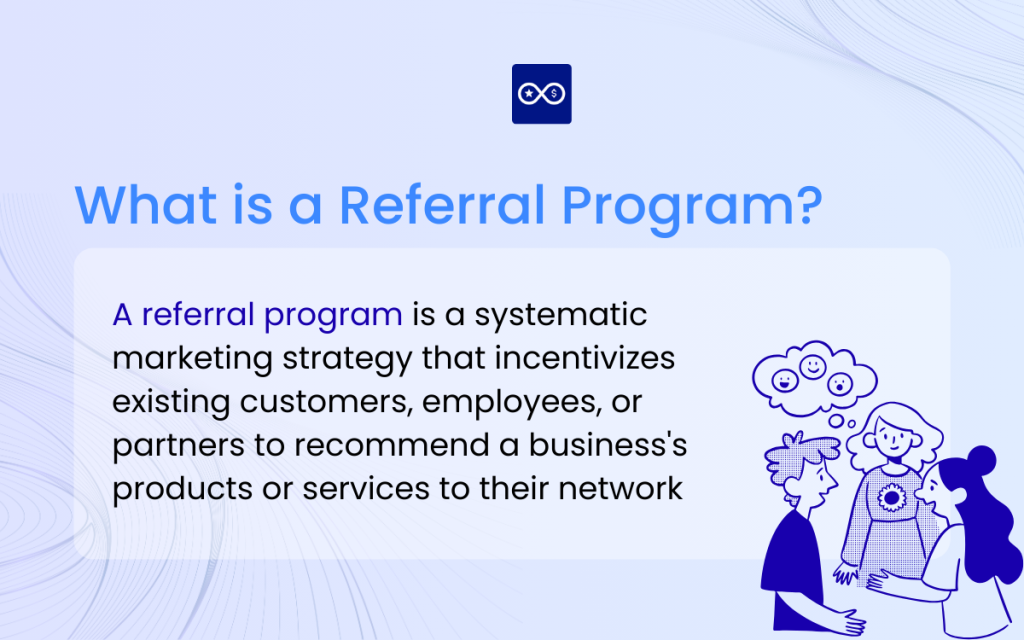
How Referral Programs Differ from Affiliate & Loyalty Programs?
Referral, affiliate, and loyalty programs share a common foundation: they all engage customers or partners through incentives to drive business growth. These programs are vital tools in below-the-line marketing, which focuses on direct, targeted communication rather than broad mass advertising.
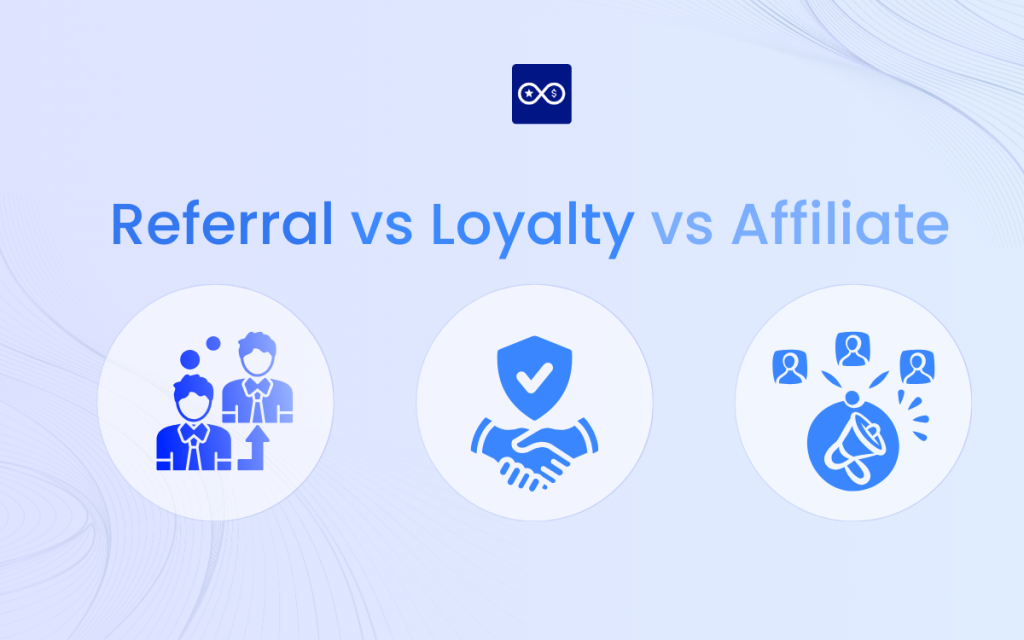
Each program uses a unique blend of pull and push marketing principles:
- Referral Programs leverage pull marketing by attracting new customers through trusted recommendations while also pushing incentives to existing customers to encourage sharing.
- Affiliate Programs primarily use pull marketing, where influencers draw interested audiences organically, rewarded through commissions for sales or leads.
- Loyalty Programs employ pull marketing to retain and deepen engagement with existing customers by rewarding repeat purchases and ongoing brand interaction.
Below is a comparison table illustrating their distinct roles in this integrated marketing approach:
| Program Type | Marketing Style | Who Recommends | Who’s Rewarded | Typical Reward | Main Goal | Example |
| Referral | Combination of Push and Pull (Below-the-Line) | Existing Customers | Referrer, Referee | Cash, Credit, Discounts | New customer acquisition | Dropbox, PayPal |
| Affiliate | Pull (Below-the-Line) | Influencers/Publishers | Referrer | Commission | Sales/lead volume growth | Amazon Affiliates |
| Loyalty | Pull (Below-the-Line) | Customers | Member | Points, Perks | Customer retention | Starbucks Rewards |
Why Referral Programs Works in 2026?
Key benefits of referral marketing
The business case for referral programs in 2026 is stronger than ever, driven by both immediate returns and long-term strategic advantages:
- Lower acquisition costs: Referral programs significantly reduce the cost of acquiring new customers. While digital advertising costs have increased by 60% over the last five years, referral programs cost around 50-75% less per acquired customer by leveraging existing customer satisfaction instead of paid media.
- Higher conversion rates: Referred prospects convert at 15-30%, many times higher than the 2-5% rate of traditional digital ads. This happens because referrals come with trust and social validation that minimize hesitation in buying decisions.
- Enhanced customer lifetime value (CLV): Customers gained through referrals show 16% higher lifetime value and 18% lower churn rates compared to those from other channels. They tend to engage more, purchase bigger, and stay loyal longer.
- Community building and loyalty fostering: Referral programs deepen emotional connections between customers and the brand, fostering loyalty and encouraging organic advocacy beyond formal incentives. Customers become invested stakeholders in the brand’s success
Market Data & New Trends for 2026
Current market data reinforces the growing importance of referral marketing in the modern business landscape:
- Trust and credibility: 92% of consumers trust referrals from people they know, making referral marketing extremely powerful compared to traditional ads with only 33% trust.
- Performance metrics: Referred customers convert 4 times better and generate 3 times more revenue over their lifetime than those acquired through other methods.
- Cost efficiency: Referral programs cost 5 times less than traditional advertising while delivering equal or better ROI, a critical advantage as ad costs rise.
- Mobile adoption: 68% of referral program interactions now happen on mobile devices, doubling since 2020, driven by mobile internet usage and social sharing.
- Digital skepticism: With 85% of consumers checking reviews before purchasing but 30% of reviews being fake, personal referrals become the most trusted information source.
- AI and automation: Advanced referral platforms use predictive analytics, fraud prevention, dynamic reward optimization, and real-time tracking, making referral programs more accessible and effective for all business sizes in 2026.
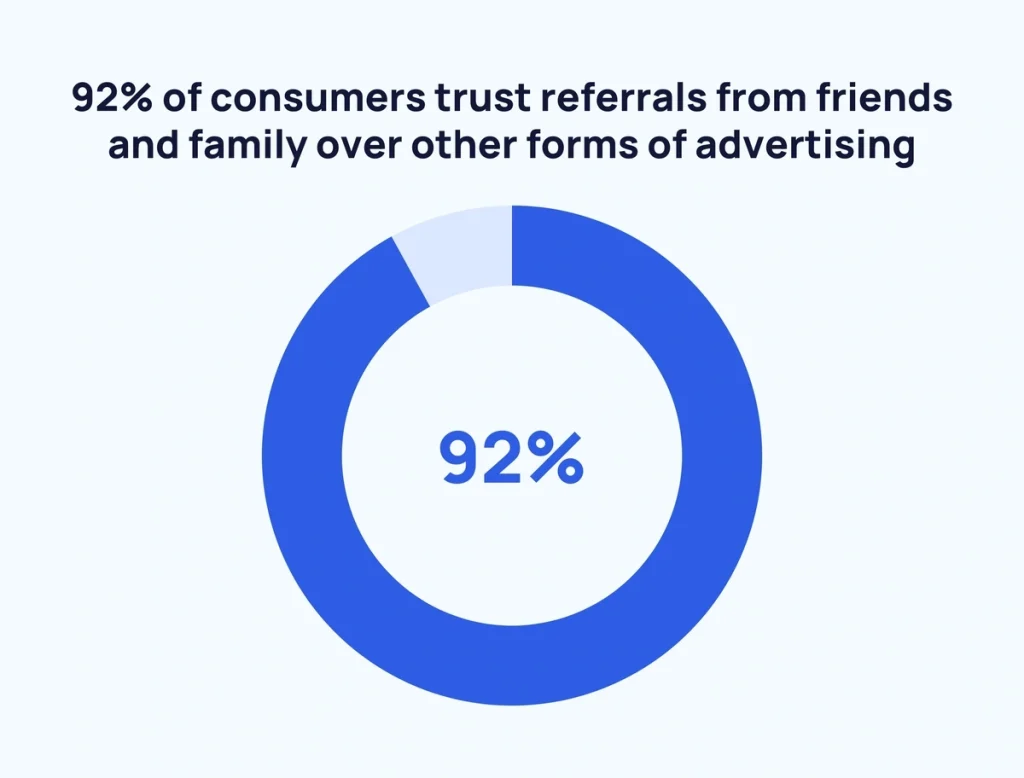
Types of Referral Program Structures
By Reward Direction
- One-sided Programs: reward only the referring customer, making them cost-effective for businesses with tight budgets or high-value products where the value proposition alone motivates new customers. These programs work well when your existing customers are highly satisfied and willing to advocate without additional incentives for their friends.
- Two-sided Programs: provide incentives for both referrers and new customers, typically seeing higher conversion rates due to the added motivation for prospects to act. The welcome discount or credit reduces the barrier to first purchase while the referrer reward encourages sharing.
- Hybrid Programs: combine elements of both approaches, perhaps offering different types of rewards to each party or varying the reward structure based on customer segments or referral volume.
By Industry/Application
- E-commerce and Physical Goods: Typically use cash back, store credits, or free products as incentives. These programs often feature two-sided rewards to reduce purchase friction for new customers while thanking loyal customers for their advocacy.
- SaaS and Digital Services: Commonly offer account credits, upgraded features, or extended trial periods. The digital nature allows for creative rewards like additional storage, premium features, or extended service periods.
- Subscription Services: Focus on reducing monthly costs or extending service periods. Examples include “Get one month free for each successful referral” or “Reduce your monthly bill by $5 for each active referral.”
- B2B Services: Often provide cash rewards, account credits, or exclusive access to new features or services. The higher lifetime value of B2B customers typically justifies larger incentive amounts.
By Referral incentives (bonus) perplexity
- Standard Rewards: Provide immediate gratification with straightforward mechanics. Perfect for businesses wanting quick program launches with minimal management overhead.
- Milestone/Tiered Systems: Create progressive reward structures that encourage continued participation and identify top advocates. These programs require more sophisticated tracking but can drive higher engagement from your most valuable customers.
- Contest/Gamified Programs: Introduce competitive elements with leaderboards, time-limited challenges, or progressive achievement levels. While requiring more active management, these programs can create viral moments and high engagement periods.
- Multi-level Programs: Allow referrers to earn from their referrals’ referrals, creating network effects. These require careful design to avoid regulatory issues while maximizing viral growth potential.
| Model Type | Pros | Cons | Ideal Scenarios |
| Standard | Simple, predictable, easy to budget | May not motivate high-volume referrers | New programs, conservative budgets |
| Tiered | Encourages multiple referrals, identifies advocates | Complex tracking, higher costs | Established programs, high-LTV customers |
| Milestone | Aligns with customer journey, maximizes value | Complex structure, potential confusion | Multi-step onboarding, premium services |
| Gamified | High engagement, viral potential | Time-intensive management, temporary effects | Competitive industries, younger audiences |
How does a referral program work?
The typical customer journey in a referral program follows a streamlined Invitation → Action → Reward flow:
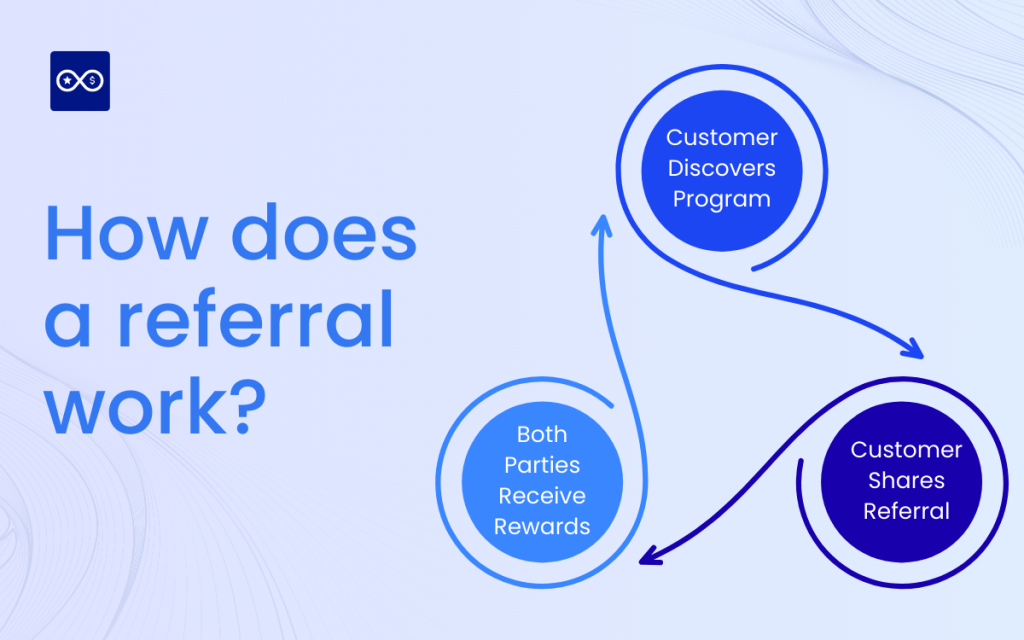
1. Invitation Stage
Existing customers discover the referral program through various touchpoints such as referral button on website, email campaigns, in-app notifications, post-purchase communications, or dedicated program pages,… The most successful programs make this discovery natural and timely, often presenting the opportunity when customer satisfaction is highest.
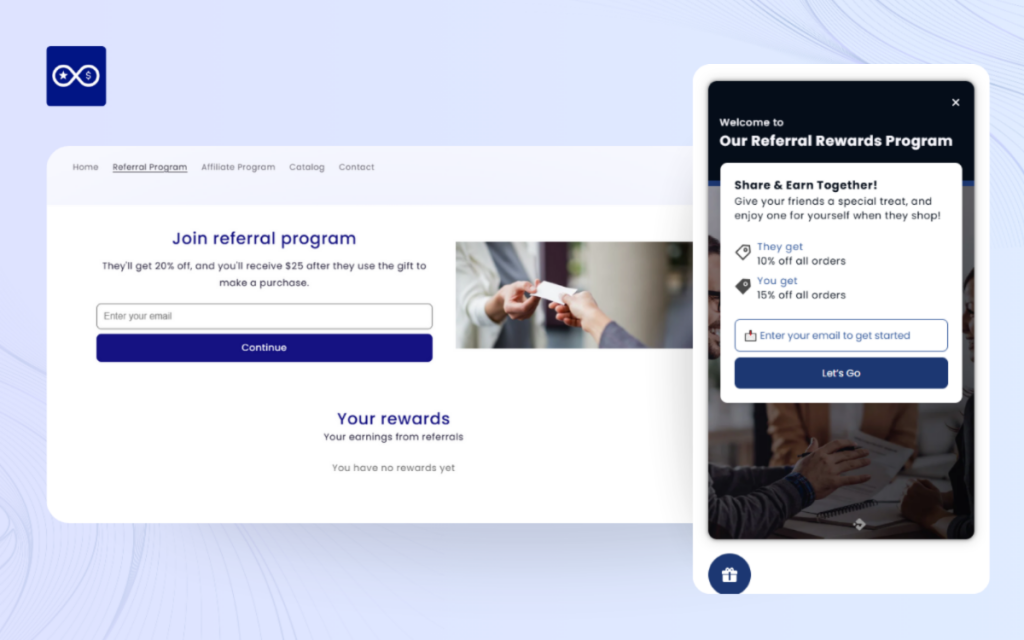
2. Action Stage
Customers share their referral links or referral codes through their preferred channels. Modern programs support multiple sharing options:
- Referral links: Unique URLs that track referrals back to the original customer
- Email invitations: Built-in templates that customers can customize and send
- Social media sharing: One-click posting to Facebook, Twitter, LinkedIn, and other platforms
- SMS/messaging: Direct sharing through text messages or messaging apps
- In-app referrals: Seamless sharing within mobile applications
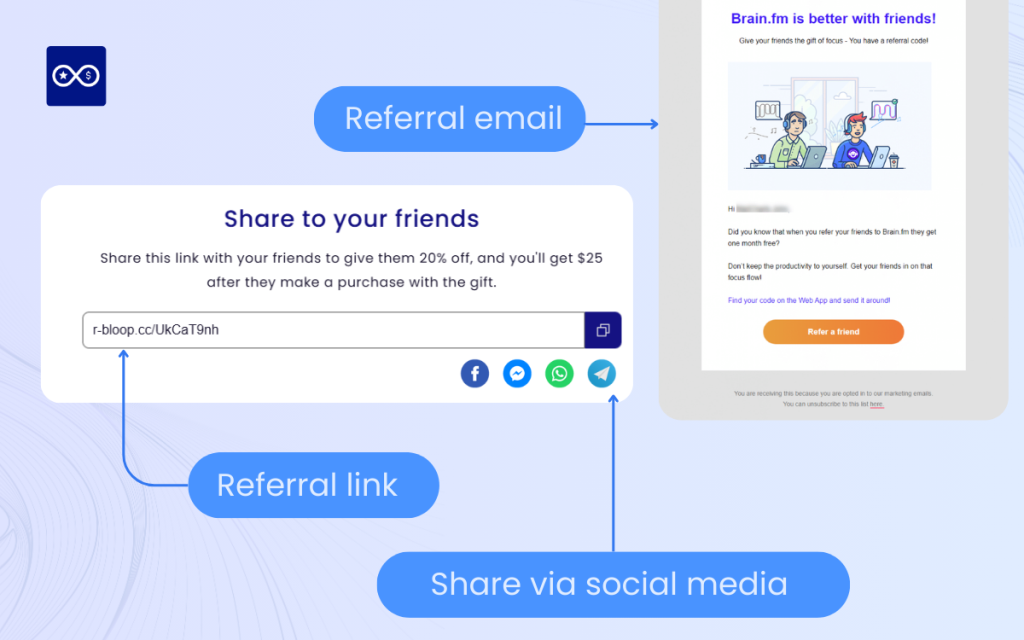
3. Reward Stage
When referred friends make qualifying purchases or complete desired actions, both parties receive their rewards. The timing and type of rewards vary significantly based on program design and business objectives.
How does referral software help you simplify referral flows?
To ensure the referral program workflow above runs smoothly and you have full control over your campaign, referral marketing software can provide critical support at each step of the customer journey:
Invitation Stage
At this stage, the goal is to make existing customers aware of the referral program naturally and at the right time. This is usually done right when customer satisfaction is high, such as immediately after a purchase or a positive interaction with the brand. Providing clear, enticing information about the benefits and easy access to the referral program encourages customers to participate without feeling pressured.
Referral marketing software helps automate and customize invitations across multiple communication channels. This includes:
- Automated multi-channel invitations (email, SMS, in-app, website)
- Customizable referral landing pages with program details and benefits
- Targeted and personalized messaging based on customer data
- Timing optimization to invite at peak satisfaction moments
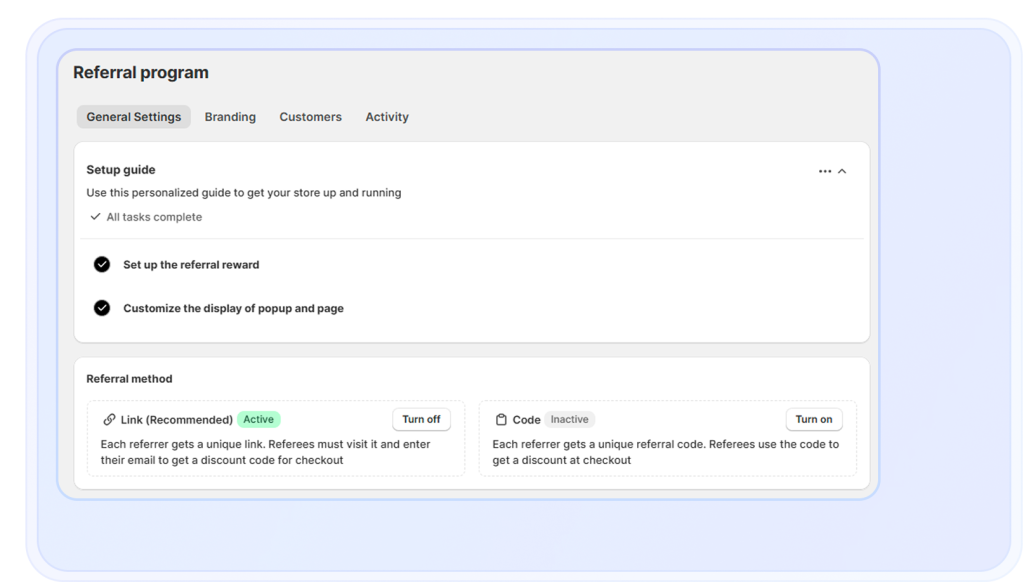
Action Stage
Once customers are aware, the action stage is where they actively share their referral information. Modern referral programs support sharing through various methods to fit customer preferences, including unique referral links, email templates, social media sharing buttons, SMS/messaging, and seamless in-app sharing.
Referral software generates and tracks unique referral codes or URLs, making it easy to monitor shares and conversions in real time. It also helps prevent fraud and misuse of referral codes to maintain program integrity.
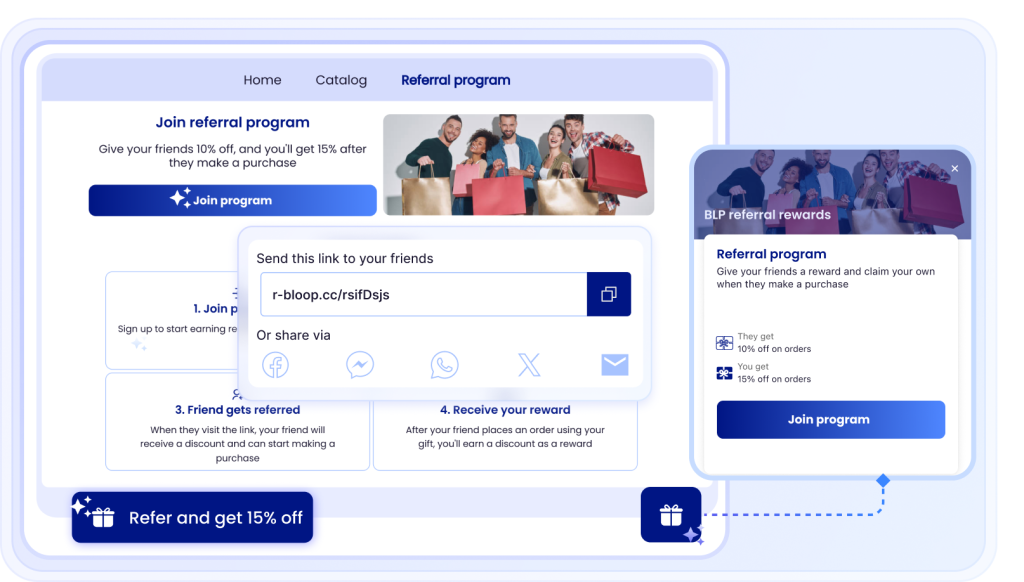
Reward Stage
Rewards are given once referred friends complete qualifying actions such as purchases, sign-ups, or other desired outcomes. This stage is crucial to maintain participant motivation and trust. Rewards can vary widely: cash, discounts, loyalty points, free products, or exclusive experiences depending on program goals.
Referral programs highly benefit from software automation to handle reward fulfillment reliably and quickly. Automated payout systems, reward customization, and real-time analytics help ensure rewards are delivered correctly and provide insights to optimize the campaign.
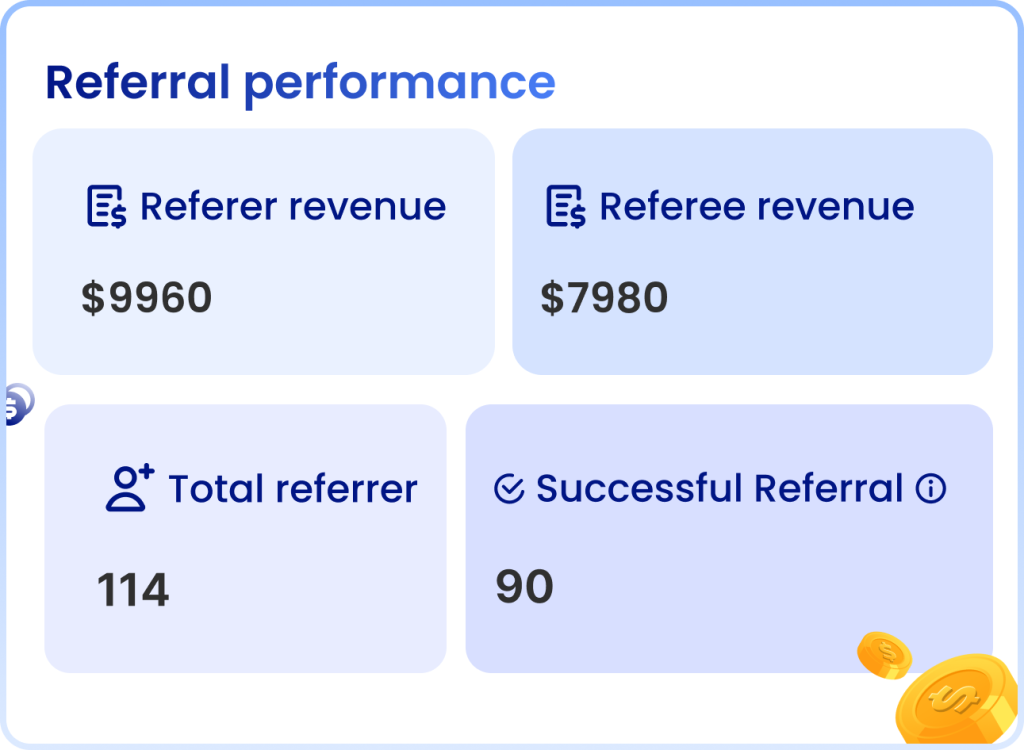
For Shopify merchants looking to implement a comprehensive referral solution, Bloop offers a complete referral marketing platform specifically designed for e-commerce businesses. With automated setup, fraud protection, and detailed analytics, Bloop makes it easy to launch and scale referral programs that drive real growth.
Best Practices for Building a High-ROI Referral Program
Step-by-Step Blueprint
Building a successful referral program requires careful planning and systematic execution. Here’s your comprehensive blueprint:
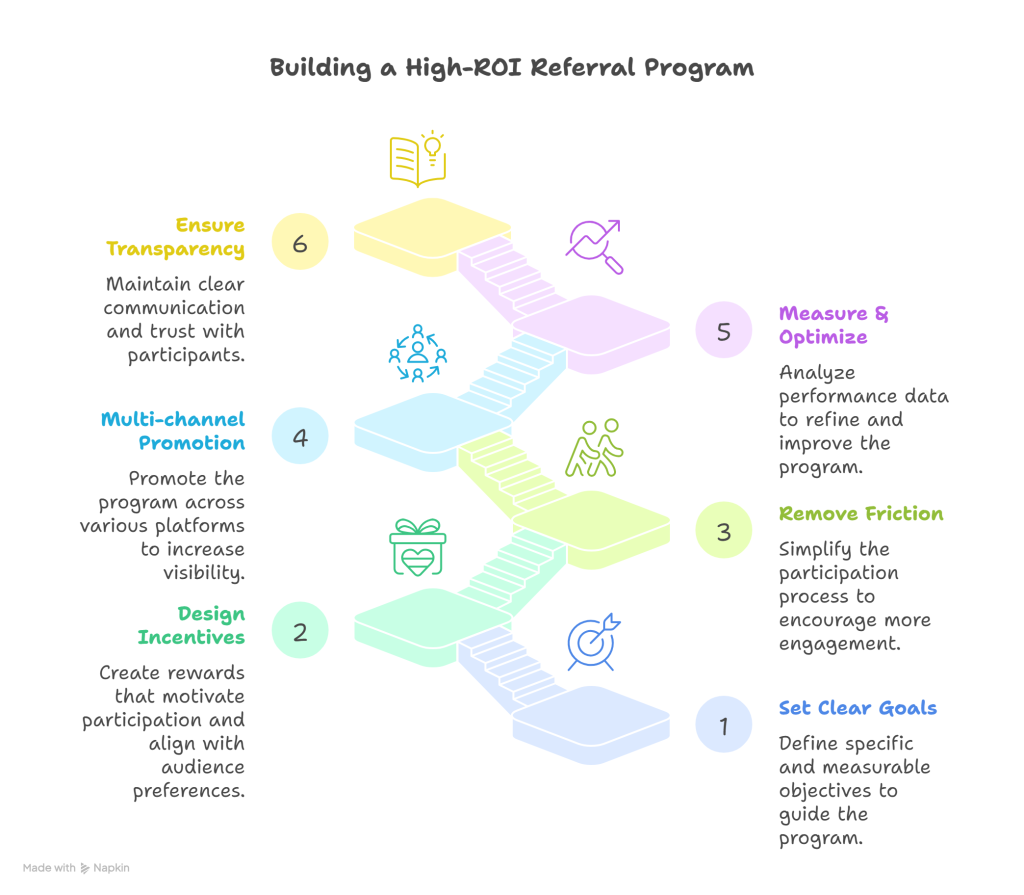
1. Set Clear Goals & KPIs
Before launching your referral program, it is crucial to define specific and measurable goals. Clear goals help your team focus on what success looks like and ensure all efforts align toward those objectives. Key metrics to track include:
- Number of program participants
- Referral conversion rates
- Customer acquisition cost through referrals
- Revenue generated from referred customers
- Program ROI and lifetime value impact
2. Design Relevant Incentives
Incentives are the heartbeat of any referral program. Understanding your audience’s motivations is critical to crafting rewards that inspire action. Consider:
- Cash rewards for universal appeal
- Account credits for repeat purchase encouragement
- Exclusive products or experiences for brand enthusiasts
- Charitable donations for socially conscious audiences
- Service upgrades for subscription-based businesses
3. Remove Friction
The easier you make it for customers to participate, the more likely they will engage. Complex sign-up processes, unclear rules, or limited sharing options create barriers that reduce program effectiveness. You can simplify every aspect of program participation through:
- One-click enrollment options
- Auto-generated referral links
- Multiple sharing channel options
- Clear, jargon-free program rules
- Streamlined reward redemption process
4. Multi-channel Promotion
Awareness and visibility across various customer touchpoints maximize referrals. Referral programs shouldn’t rely on a single channel but integrate promotions into post-purchase emails, customer account dashboards, social media, customer service interactions, and website banners.
Consistent reminders at relevant moments reinforce participation and keep the program top-of-mind. Diverse channel use also expands reach and captures different audience segments.
- Embed referral prompts in post-purchase communications and account portals
- Leverage social media and customer support to mention referral benefits organically
- Use website banners and pop-ups to maintain ongoing program visibility
5. Ongoing Measurement and Optimization
Implement robust analytics to continuously improve program performance:
- A/B testing of reward amounts and structures
- Channel performance analysis
- Customer segmentation and targeting refinement
- Fraud detection and prevention measures
- Regular program rule updates based on learnings
6. Transparency and Clear Communication
Trust is the backbone of any referral ecosystem, unclear rules can backfire quickly.
- Detailed terms and conditions
- FAQ sections addressing common concerns
- Real-time tracking of referral status
- Prompt reward delivery and communication
- Customer support dedicated to program issues
Testing, Optimization & Scaling
Testing, Optimization & Scaling are essential because no single referral program fits all audiences perfectly. Different incentives, messages, and program mechanics resonate differently depending on your customer base and business model. Without ongoing testing and improvements, programs may underperform or stagnate.
Start Small, Scale Smart
Launch your referral program with a limited audience to identify potential issues and optimize performance before broader rollout. This approach allows you to refine messaging, adjust reward structures, and improve user experience based on real user feedback.
Implement Feedback Loops
Create systematic processes for collecting and acting on participant feedback. Survey both successful and unsuccessful participants to understand barriers and opportunities for improvement.
2026-Specific Fraud Prevention
Modern referral programs face sophisticated fraud attempts. Implement AI-powered fraud detection that identifies:
- Unusual referral patterns or velocity
- Self-referrals and fake accounts
- Bot-generated traffic and conversions
- Geographic anomalies and IP address irregularities
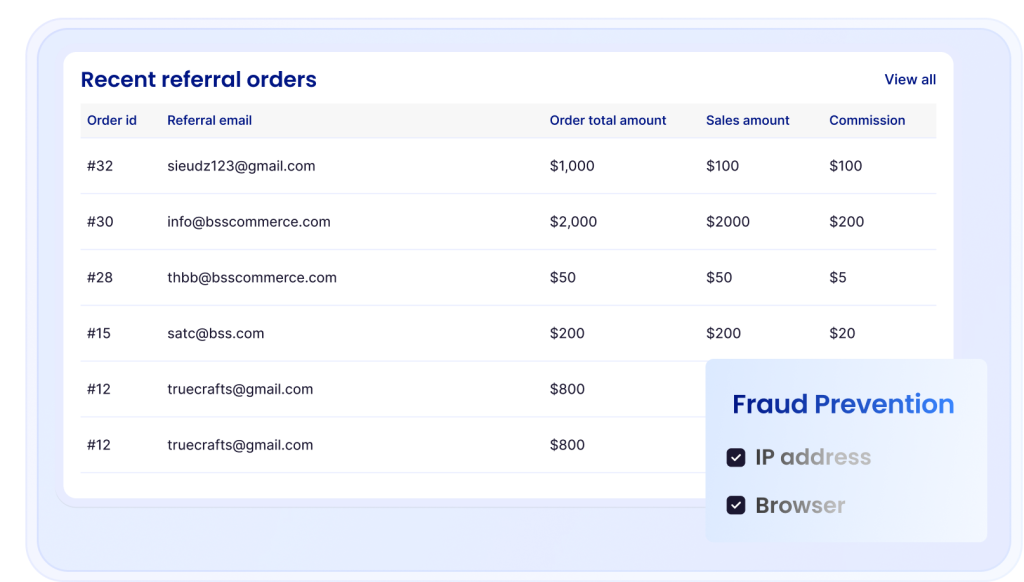
Regulatory Considerations
Ensure compliance with evolving data privacy regulations, anti-spam laws, and financial incentive disclosures. Consider legal review for programs operating across multiple jurisdictions.
Top Referral Program Examples in 2026 (With Analysis)
Gymshark referral program
Gymshark uses its referral program as a strategic part of its marketing to drive new customer acquisitions by leveraging existing customers. This program is designed to reward both the referrer and the referred friend, fitting well into Gymshark’s community-driven brand image and ecommerce growth strategy.
- How the Program Works: Customers who shop on gymshark.com or the Gymshark app receive a unique referral link after purchase. They share this link with friends and family via email, text, or social media. When a referred friend makes their first qualifying purchase of £50/$50 or more using the link, the friend gets £10/$10 off their order. Subsequently, the referrer receives a £10/$10 Gymshark discount code via email, valid for 60 days. There is no limit to how many referrals a customer can make, but the referral rewards are only available to new customers in the UK, US, Canada, and Australia.
- Why It Works and Lessons: The Gymshark referral program works because it provides tangible, immediate discounts for both parties, making it highly motivating. The low purchase threshold for the friend encourages conversions, while the referrer’s reward incentivizes repeated sharing. The program also integrates well with the Gymshark app and website, providing a seamless user experience. Key lessons include offering dual-sided rewards, keeping participation easy and accessible, and aligning referral incentives with the brand’s customer acquisition goals. This approach nurtures brand loyalty and community growth through personal networks.
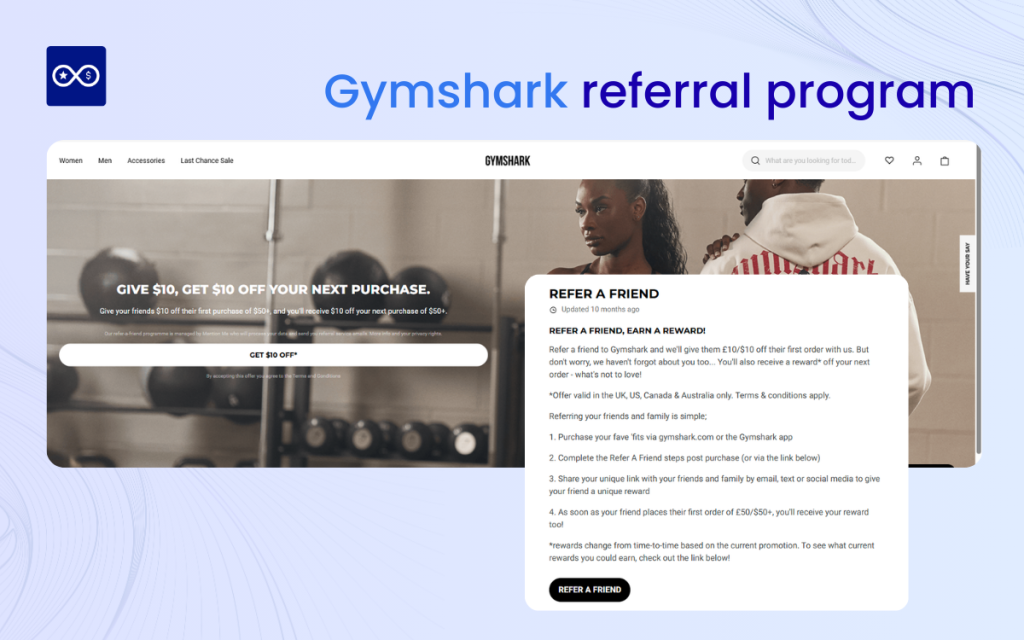
Chase Bank Referral Program
Chase uses referrals to expand their checking account customer base, tying referral rewards to account openings, a critical growth metric for retail banking.
- How it works: Referrers earn $50 for each friend who opens a qualifying Chase checking account (up to $500 annually). The referee also receives incentives depending on the account type.
- Why it works: The straightforward cash reward appeals to referrers, while the account-based criteria ensures genuine new customers. Dual incentives and clear reward caps maintain program sustainability.
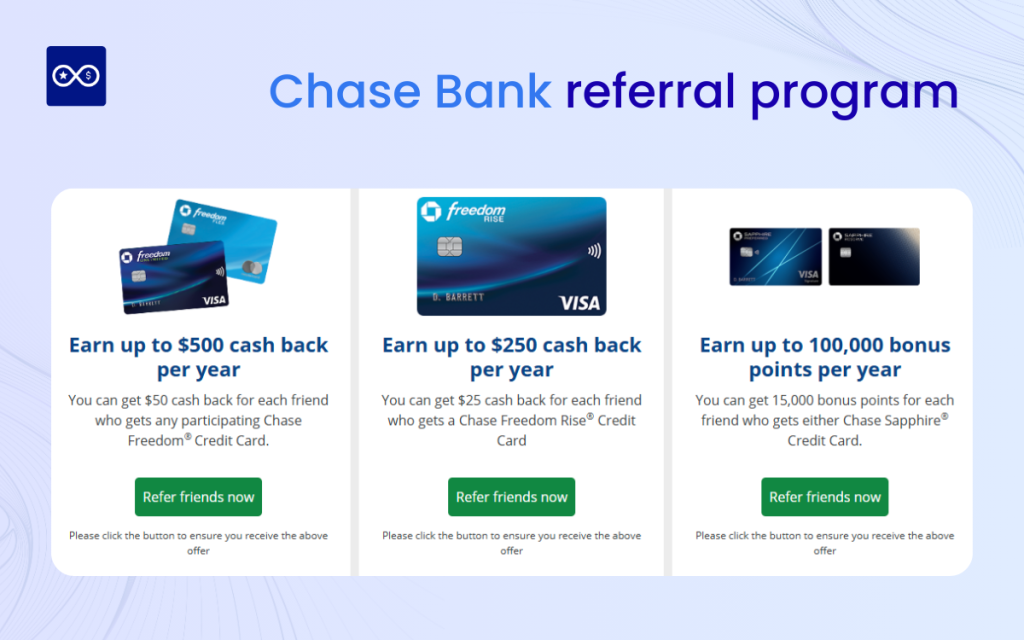
Dropbox Referral Program
Dropbox leverages its referral program as a growth engine by rewarding users with additional cloud storage, fitting its product-centric strategy. It keeps users engaged by providing tangible, useful rewards.
- How it works: Referrers earn extra storage space (e.g., up to 32 GB) for each friend who registers using their referral code. Both referrer and referee gain additional space, encouraging collaborative usage.
- Why it works: The reward directly enhances the user experience, motivating sharing. The incremental storage aligns with product utility, not just cash incentives, strengthening customer loyalty.
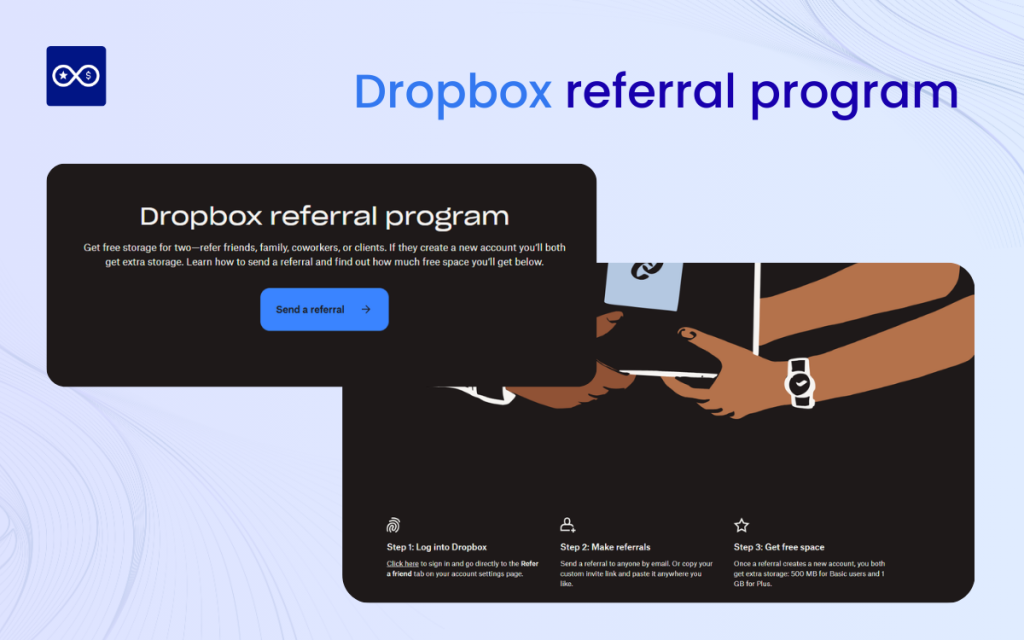
Casper Referral Program
Casper integrates its mattress sales with a referral program to boost acquisition while reinforcing its direct-to-consumer model. The referral rewards are designed to drive conversions through discounts and gift cards.
- How it works: Referrers receive a $75 Amazon gift card for each friend purchasing a mattress, and the friend gets 25% off their first mattress order.
- Why it works: Gift card rewards are highly motivating and versatile, while the friend discount lowers purchase barriers. This balance enhances the viral spread and conversion rates.
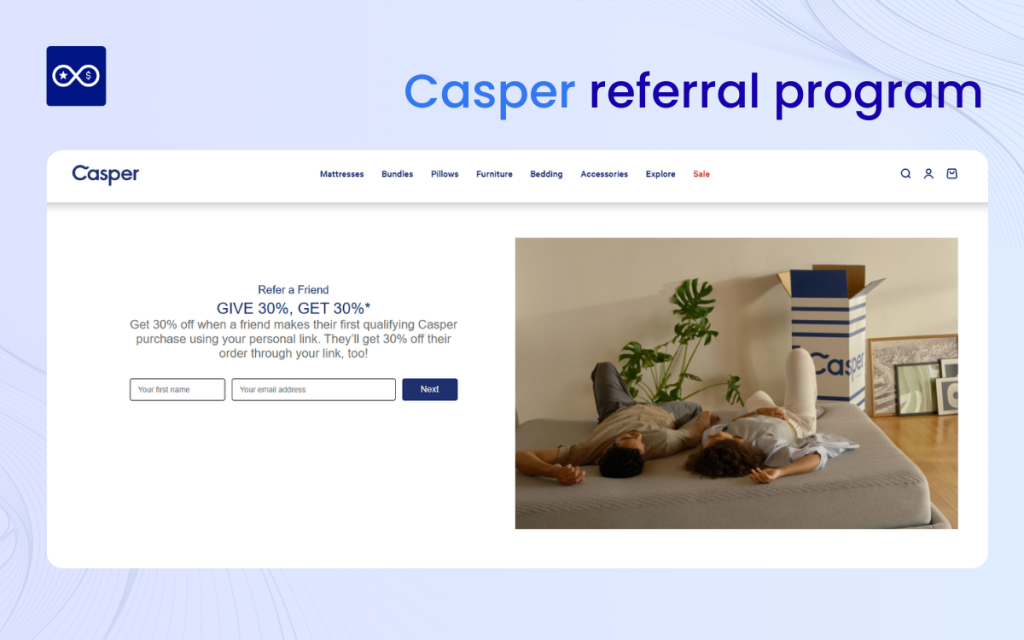
Why Some Referral Programs Fail?
Referral programs can fail for various reasons that undermine their effectiveness and engagement. Common challenges include lack of awareness, poor incentives, complexity, and a mismatch between the program and customer expectations. Key reasons for referral program failure:
- Insufficient Rewards: Incentives too small to motivate action. Example: Offering a $2 discount for a referral when your average order value is $80 won’t motivate much action.
- Complex Sign-up Processes: If customers need to navigate multiple steps just to generate a referral link, most will give up.
- Poor Promotion: Programs that customers never discover
- Unclear Rules: Confusion about qualifying actions or reward timing
- Technical Issues: Broken tracking or reward fulfillment systems
While many referral programs stumble due to poor execution, Bloop is designed to eliminate those roadblocks and ensure businesses maximize ROI from their referral strategies. Here’s how:
- Setup Your Program Easily → Branded referral pages and popups + ready-to-use referral checklist for starting your program in 30 minutes.
- Better Promotion → Built-in CTAs in checkout, popups, emails, dashboards, and social media.
- Clear Rules & Transparency → Real-time tracking, automated updates, and customizable FAQs.
- Reliable Tech → Accurate tracking, fraud prevention, and instant reward fulfillment.
>>> Explore the Bloop referral program demo store to know more!
FAQs About Referral Programs
Why do some referral programs scale and others flop?
Successful programs align incentives with customer motivation, remove friction from participation, and consistently promote the program across all customer touchpoints. Failed programs often suffer from insufficient rewards, complex processes, or lack of ongoing promotional support.
What is a typical or sufficient referral reward?
Effective referral rewards typically range from 10-25% of customer lifetime value or 5-15% of average order value. The exact amount depends on your profit margins, customer acquisition costs, and competitive landscape. Test different amounts to find your optimal balance of motivation and profitability.
Do programs increase fraud, and how can it be prevented?
While referral programs can attract fraudulent activity, modern platforms include sophisticated fraud detection using AI pattern recognition, IP tracking, and behavioral analysis. Best practices include requiring verified email addresses, monitoring for unusual referral patterns, and implementing cooling-off periods for reward distribution.
How do you attribute ROI for referral programs versus other channels?
Track referral program ROI by comparing total program costs (rewards, platform fees, management time) against the lifetime value of acquired customers, minus the revenue they would have generated anyway. Use control groups and attribution windows to isolate program impact from organic growth.
Can small businesses compete with big brands using referrals?
Absolutely. Referral programs often work better for small businesses because they can offer more personal service, build stronger customer relationships, and respond more quickly to feedback. Focus on exceptional customer experience first, then leverage that satisfaction through referrals.
What’s the best way to market a program for maximum adoption?
Promote your referral program immediately after positive customer experiences: post-purchase, after successful support interactions, or following positive feedback. Use multiple channels including email, in-app notifications, social media, and direct customer communication.
2026 Innovations & Future-Proofing Your Referral Program
Referral programs are no longer just about “give $10, get $10.” With rapid shifts in technology, customer expectations, and marketing ecosystems, the next generation of referral strategies will be smarter, more personalized, and deeply integrated into the customer journey. Below are four innovation pillars shaping the future:
AI and Automation Referral Marketing
As AI continues to mature, referral programs will become more intelligent and self-optimizing, reducing manual effort while increasing precision.
- Predictive Analytics: Identify customers most likely to refer based on behavior patterns, purchase history, and engagement metrics
- Dynamic Reward Optimization: Automatically adjust incentive amounts based on customer segments, seasonal factors, and competitive landscape
- Automated Fraud Detection: Real-time identification and blocking of suspicious referral activity using machine learning algorithms
- Personalized Messaging: Customized program invitations and reminders based on individual customer preferences and communication history
Mobile-First and Omnichannel Integration
The modern consumer is always connected, and referral programs must match that seamless, multi-platform reality.
- One-Tap Sharing: Seamless referral sharing through mobile apps with pre-populated messages and social media integration
- In-App Program Management: Complete program participation through mobile applications with real-time tracking and reward redemption
- Cross-Platform Synchronization: Consistent program experience across web, mobile, email, and social media touchpoints
Personalization and Segmentation
Generic referral offers are quickly losing their effectiveness. The future is hyper-personalized programs that feel custom-made for each customer.
- Behavioral Targeting: Different program versions for various customer segments based on purchase history, engagement level, and demographic factors
- Dynamic Reward Personalization: Individual reward amounts and types based on customer value, preferences, and likelihood to refer
- Lifecycle Integration: Referral program touchpoints aligned with customer journey stages for maximum relevance and impact
Ecosystem Integration Opportunities
Referral programs work best when they’re not standalone campaigns but seamlessly woven into broader engagement ecosystems.
- Loyalty Program Convergence: Combined referral and loyalty programs that reward both acquisition and retention behaviors
- Review and Social Proof Integration: Referral requests tied to positive review submissions or social media engagement
- Customer Service Integration: Referral program promotion during positive customer service interactions
Conclusion
Referral programs represent one of the most powerful and cost-effective marketing strategies available to businesses in 2026. As digital advertising becomes more expensive and less effective, the trust and authenticity inherent in personal recommendations make referral programs not just beneficial, but essential for sustainable growth.
The key to referral program success lies in understanding your customers, removing friction from participation, and continuously optimizing based on real performance data. Whether you’re a small business looking to reduce acquisition costs or an enterprise company seeking to scale growth, referral programs offer a path to sustainable, profitable customer acquisition.
The technological advances of 2026 have democratized access to sophisticated referral program features, making it possible for businesses of all sizes to implement enterprise-level strategies. With AI-powered optimization, automated fraud prevention, and seamless integration capabilities, there’s never been a better time to launch or upgrade your referral program.
Remember that the most successful referral programs start with exceptional customer experiences. Focus first on delivering value that naturally inspires advocacy, then provide the tools and incentives that make sharing easy and rewarding.
Ready to launch your high-converting referral program? Bloop’s comprehensive referral marketing platform makes it easy to set up, manage, and optimize referral programs that drive real growth. With automated fraud protection, customizable rewards, and detailed analytics, Bloop provides everything you need to turn your satisfied customers into your most powerful marketing channel. Start your free trial today and discover how referral marketing can transform your business growth strategy.